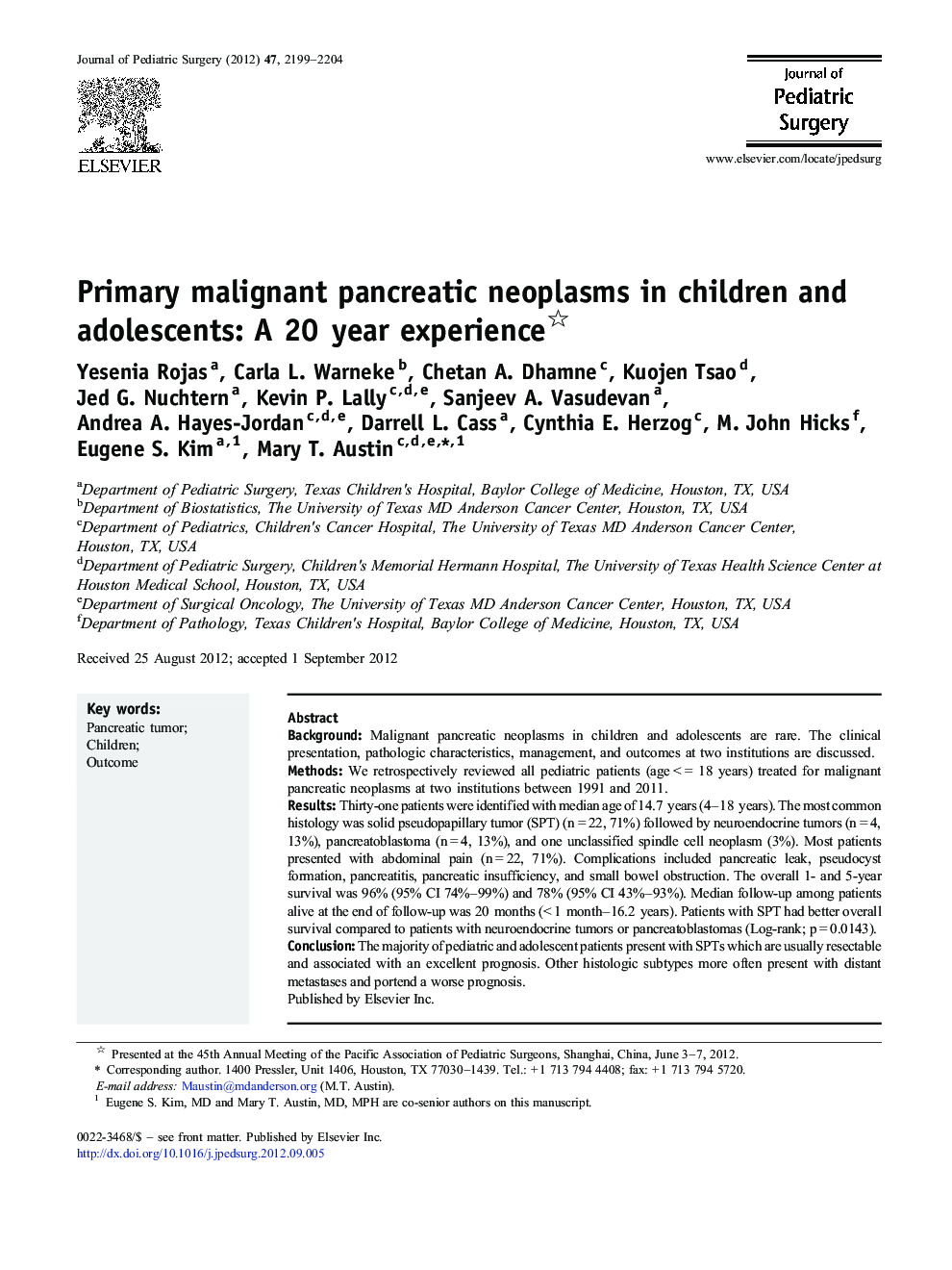| Article ID | Journal | Published Year | Pages | File Type |
|---|---|---|---|---|
| 4156469 | Journal of Pediatric Surgery | 2012 | 6 Pages |
BackgroundMalignant pancreatic neoplasms in children and adolescents are rare. The clinical presentation, pathologic characteristics, management, and outcomes at two institutions are discussed.MethodsWe retrospectively reviewed all pediatric patients (age < = 18 years) treated for malignant pancreatic neoplasms at two institutions between 1991 and 2011.ResultsThirty-one patients were identified with median age of 14.7 years (4–18 years). The most common histology was solid pseudopapillary tumor (SPT) (n = 22, 71%) followed by neuroendocrine tumors (n = 4, 13%), pancreatoblastoma (n = 4, 13%), and one unclassified spindle cell neoplasm (3%). Most patients presented with abdominal pain (n = 22, 71%). Complications included pancreatic leak, pseudocyst formation, pancreatitis, pancreatic insufficiency, and small bowel obstruction. The overall 1- and 5-year survival was 96% (95% CI 74%–99%) and 78% (95% CI 43%–93%). Median follow-up among patients alive at the end of follow-up was 20 months (< 1 month–16.2 years). Patients with SPT had better overall survival compared to patients with neuroendocrine tumors or pancreatoblastomas (Log-rank; p = 0.0143).ConclusionThe majority of pediatric and adolescent patients present with SPTs which are usually resectable and associated with an excellent prognosis. Other histologic subtypes more often present with distant metastases and portend a worse prognosis.
